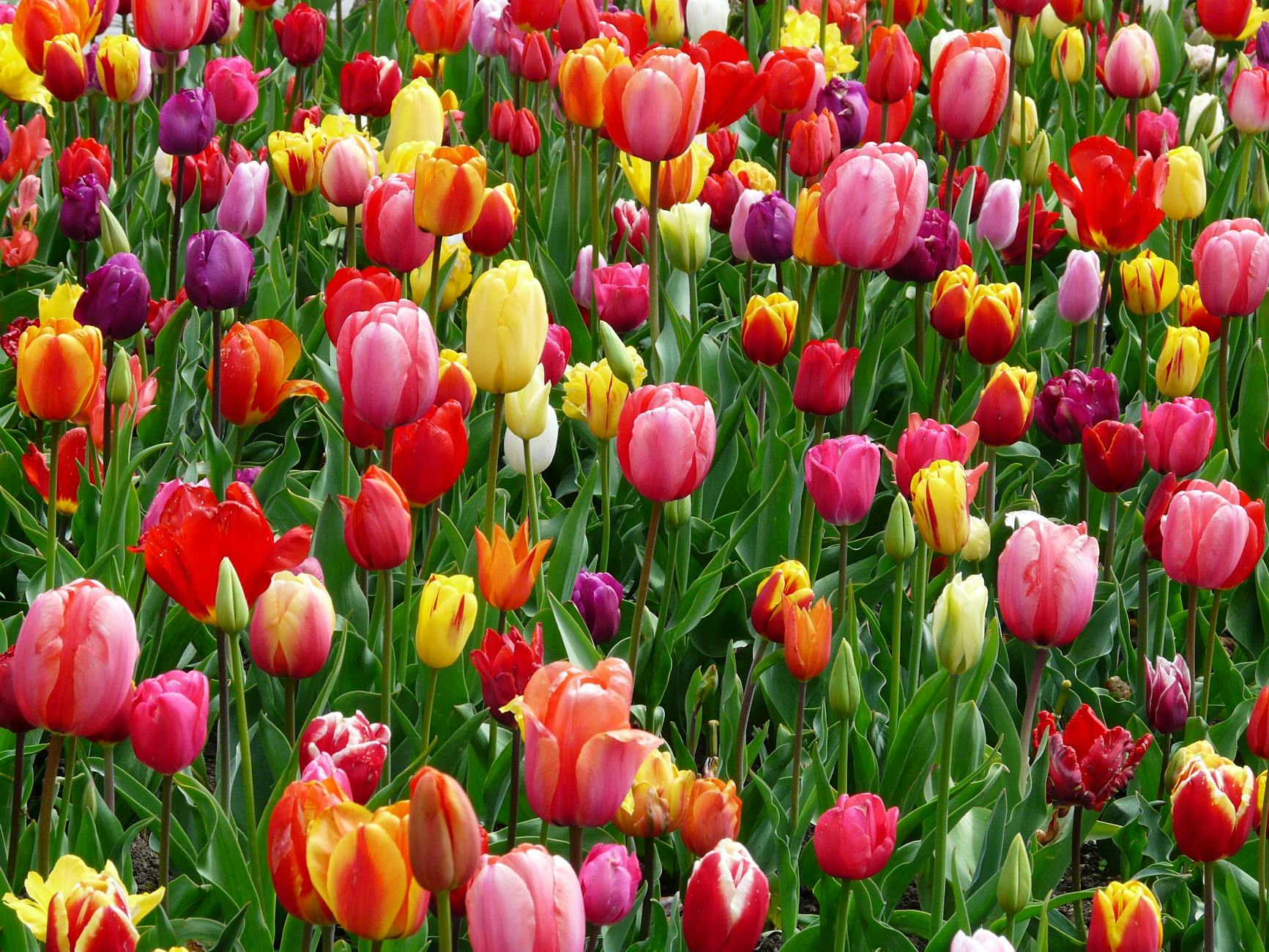Spring Equinox 2025: Science, Myths And Traditions Explained
Discover the science, traditions, and significance of the vernal equinox marking spring's arrival

Understanding the Spring Equinox
The Spring Equinox, also known as the vernal equinox, marks the official astronomical beginning of spring in the Northern Hemisphere. For 2025, this significant celestial event will occur precisely at 9:01 UTC (5:01 a.m. EDT) on Thursday, March 20. This moment represents a perfect alignment in Earth’s annual journey around the sun, bringing with it longer days, warmer temperatures, and the reawakening of nature after winter’s dormancy.
The word ‘equinox’ derives from Latin, combining ‘aequus’ (equal) and ‘nox’ (night), referring to the nearly equal hours of daylight and darkness experienced worldwide on this day. While our ancestors may have perceived day and night as perfectly equal during the equinox, modern precise measurements reveal slight variations due to atmospheric refraction and the technical definition of sunrise and sunset.
The Science Behind the Spring Equinox
The Spring Equinox is not merely a date on the calendar but a specific astronomical event that occurs when the Sun crosses the celestial equator – an imaginary extension of Earth’s equator projected onto the sky. During this crossing, the Sun moves from the southern to the northern hemisphere, bringing spring to the north and autumn to the south.
This celestial transition happens because of Earth’s 23.5-degree tilt on its axis. Throughout the year, as our planet orbits the sun, different hemispheres receive varying amounts of sunlight. At the equinox, Earth’s axis is positioned perpendicular to the sun’s rays, causing them to fall directly on the equator. This alignment results in nearly equal daylight hours across all latitudes on our planet.
After the Spring Equinox, the Northern Hemisphere begins tilting more toward the sun, receiving more direct sunlight and experiencing longer daylight hours, which ultimately leads to warmer temperatures. This shift marks the beginning of spring’s gradual warming, though weather patterns may lag behind the astronomical season due to the time required for land and water masses to heat up.
Equinox vs. Solstice: Understanding Seasonal Transitions
While equinoxes mark the times when day and night are nearly equal worldwide, solstices represent the extreme differences between daylight and darkness. The year 2025 will experience four major astronomical events marking seasonal transitions:
- Spring (Vernal) Equinox: March 20, 2025
- Summer Solstice: June 20, 2025 – The longest day in the Northern Hemisphere
- Fall (Autumnal) Equinox: September 22, 2025
- Winter Solstice: December 21, 2025 – The shortest day in the Northern Hemisphere
These four points divide our calendar year into the four astronomical seasons. While meteorological seasons follow slightly different dates for weather record-keeping purposes, these astronomical events have guided human understanding of seasonal changes for millennia.
Common Myths About the Spring Equinox
Several persistent myths and misconceptions surround the Spring Equinox. Let’s examine some of the most common ones:
Myth 1: Day and Night Are Exactly Equal
While the term ‘equinox’ suggests equal day and night, this equality isn’t precisely accurate. Most locations actually experience slightly more than 12 hours of daylight on the equinox. This occurs because we define sunrise as the moment the sun’s upper edge appears on the horizon and sunset when its upper edge disappears. Additionally, atmospheric refraction bends sunlight, making the sun appear above the horizon when it’s technically below it.
Myth 2: You Can Balance an Egg Only on the Equinox
A popular equinox tradition involves attempting to balance raw eggs on their ends. While this can be achieved on the equinox with patience and steady hands, it’s equally possible any other day of the year. The equinox has no special gravitational effects that would make egg-balancing easier.
Myth 3: The Equinox Causes Stronger Storms
Some believe the equinox brings severe weather patterns. While seasonal transitions can indeed feature volatile weather as temperature gradients shift, there’s no direct astronomical cause linking the precise moment of the equinox to storm intensity.
Cultural Celebrations and Traditions
Throughout history, the Spring Equinox has inspired celebrations across diverse cultures, often symbolizing rebirth, renewal, and fertility. Many ancient structures, from Stonehenge in England to the pyramids of Chichen Itza in Mexico, were designed to align with the sun during equinoxes, highlighting the event’s significance to our ancestors.
Ancient Celebrations
Many ancient civilizations marked the Spring Equinox with elaborate rituals and celebrations:
- Persian New Year (Nowruz): Dating back over 3,000 years, this celebration coincides with the equinox and remains important in Iran and throughout Central Asia.
- Maya and Aztec Ceremonies: At Mexico’s Chichen Itza pyramid, the equinox sun creates a shadow illusion of a serpent descending the structure’s stairs.
- Celtic and Druidic Observances: These traditions honored the fertility goddess Eostre (from whose name ‘Easter’ may derive) and celebrated nature’s reawakening.
Modern Observances
Today, the Spring Equinox continues to inspire celebrations worldwide:
- Japan’s national holiday of Shunbun no Hi involves family visits to ancestral graves.
- Gatherings at ancient monuments like Stonehenge attract thousands who witness the sunrise alignment.
- Neo-pagan and Wiccan communities celebrate Ostara, honoring the balance between light and darkness.
Spring Equinox and Religious Holidays
Many religious observances are connected to the Spring Equinox, either directly or through their timing:
Easter: Christianity’s most important holiday has its date determined by the Spring Equinox. Easter Sunday falls on the first Sunday after the first full moon following the vernal equinox. In 2025, Easter will be celebrated on April 20.
Passover: This important Jewish holiday typically occurs near the Spring Equinox. In 2025, Passover begins on the evening of April 12.
Holi: The Hindu festival of colors celebrating the triumph of good over evil often occurs close to the Spring Equinox.
These connections between astronomical events and religious observances highlight humanity’s long tradition of marking spiritual milestones alongside natural cycles.
Natural Signs of Spring
While the Spring Equinox marks the astronomical beginning of spring, nature provides numerous visible indicators of the seasonal transition:
- Early-blooming flowers like crocuses and daffodils emerge from the soil
- Trees develop buds that will soon unfurl into leaves
- Migratory birds return from their winter territories
- Hibernating animals become active again
- Days grow progressively longer and warmer
These biological responses to increasing daylight and warming temperatures serve as natural markers of spring’s arrival, complementing the astronomical definition provided by the equinox.
Spring Equinox 2025: Key Dates to Remember
As we move through the spring season of 2025, several important dates follow the equinox:
- Daylight Saving Time: Already began on March 9, 2025 (second Sunday in March)
- Easter Sunday: April 20, 2025
- Passover: Begins evening of April 12, 2025
- Mother’s Day: May 11, 2025
- Memorial Day: May 26, 2025
- Father’s Day: June 15, 2025
- Summer Solstice: June 20, 2025
These dates help us navigate the progression of spring into summer and mark important cultural and familial celebrations that occur during this season of renewal.
Celebrating the Spring Equinox
If you’re looking to acknowledge this astronomical event in your own life, consider these meaningful ways to celebrate:
- Plant seeds or trees as a symbol of new beginnings
- Clean and declutter your living space (the original “spring cleaning”)
- Watch the sunrise or sunset on equinox day
- Create nature-inspired art or crafts
- Prepare a meal featuring seasonal spring ingredients
- Start a nature journal to document spring’s progression
These activities connect us to the natural rhythms that humans have observed and celebrated for thousands of years, bringing mindfulness to seasonal transitions.
Frequently Asked Questions About the Spring Equinox
Q: Does the Spring Equinox always fall on March 20?
A: The Spring Equinox typically falls on March 19, 20, or 21, depending on the year. The exact timing shifts slightly due to our calendar system and leap years. In 2025, it occurs on March 20.
Q: Are day and night exactly equal during the equinox?
A: Not exactly. Most locations experience slightly more than 12 hours of daylight on the equinox due to how we define sunrise and sunset and because of atmospheric refraction, which makes the sun visible when it’s geometrically below the horizon.
Q: Why doesn’t the weather immediately warm up after the Spring Equinox?
A: There’s a seasonal lag between the astronomical start of spring and warmer temperatures because oceans and land masses take time to warm up. This thermal inertia means peak temperatures typically occur well after the summer solstice, and similarly, the coldest days usually come after the winter solstice.
Q: Can I really balance an egg on its end during the equinox?
A: While this is a popular tradition, the equinox doesn’t create special gravitational conditions that make egg-balancing easier. With patience and steady hands, you can balance an egg on its end any day of the year.
Q: How did ancient cultures track the equinox without modern tools?
A: Ancient civilizations built structures aligned with celestial events. By observing where the sun rose and set throughout the year, and tracking shadow lengths, they could determine equinoxes with remarkable accuracy. Many monuments worldwide were designed specifically to mark these important astronomical events.
As we approach the Spring Equinox of 2025, take a moment to appreciate this perfect astronomical balance point that has fascinated humanity for millennia. Whether you observe it through scientific understanding, spiritual practice, or simply by noticing the changing seasons, the equinox connects us to both cosmic rhythms and the natural world around us.
References
- https://earthsky.org/astronomy-essentials/everything-you-need-to-know-vernal-or-spring-equinox/
- https://www.timeanddate.com/calendar/march-equinox.html
- https://www.cbsnews.com/news/first-day-spring-2025-vernal-equinox/
- https://www.farmersalmanac.com/spring-equinox-first-day-spring
- https://6abc.com/post/first-day-spring-2025-what-know-seasons-equinox-dates-easter-mothers-memorial/16002678/
Read full bio of Shinta











